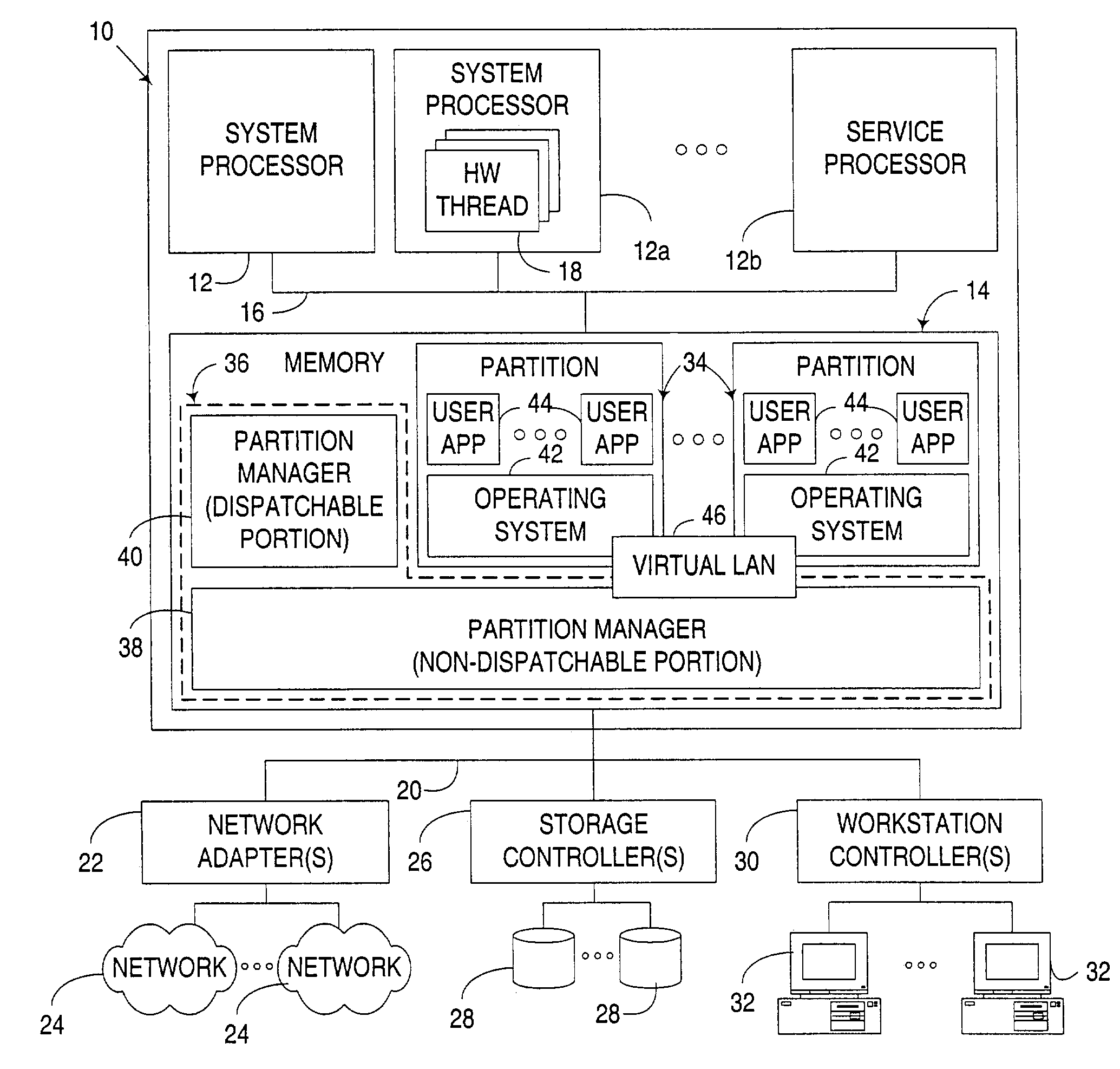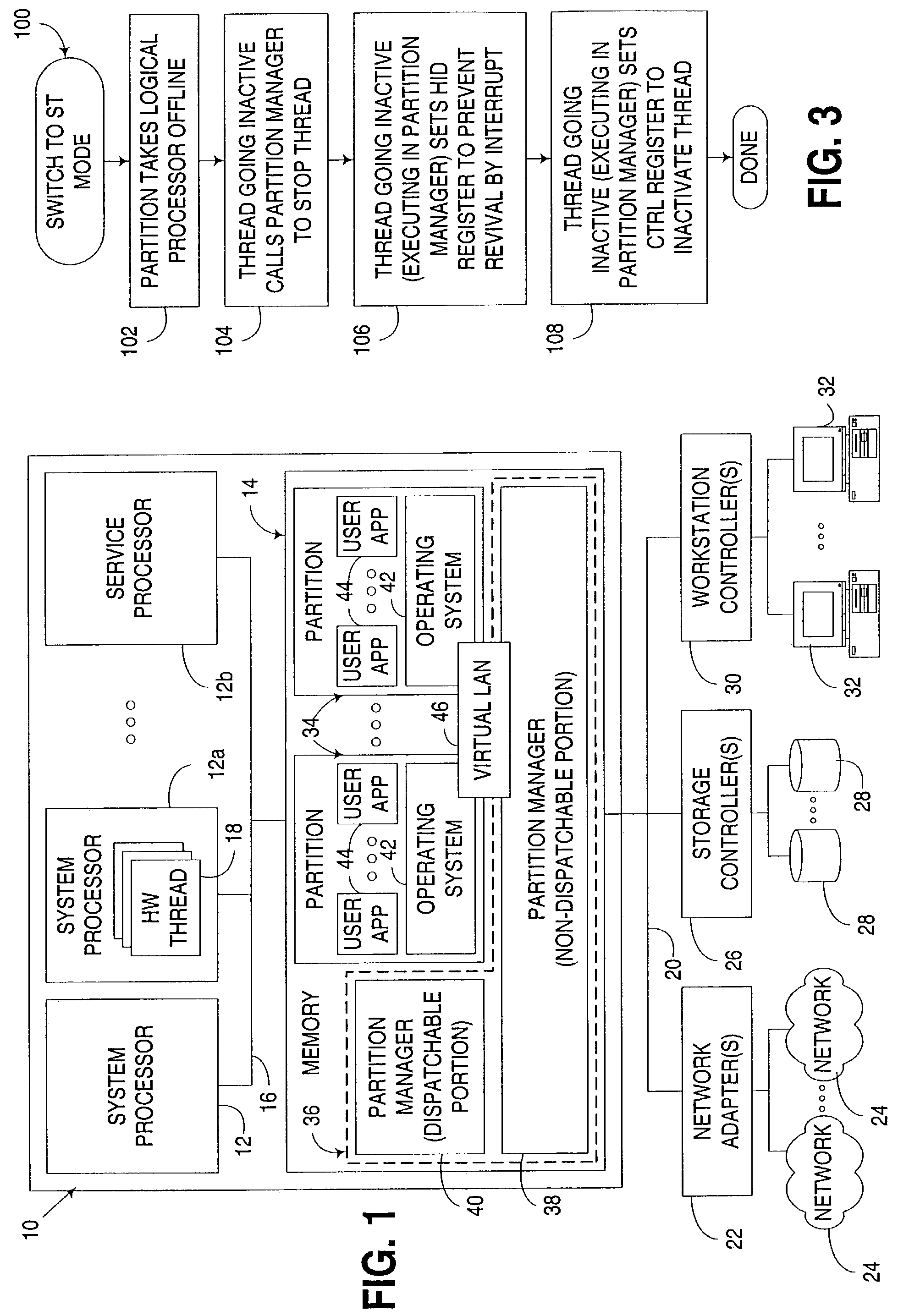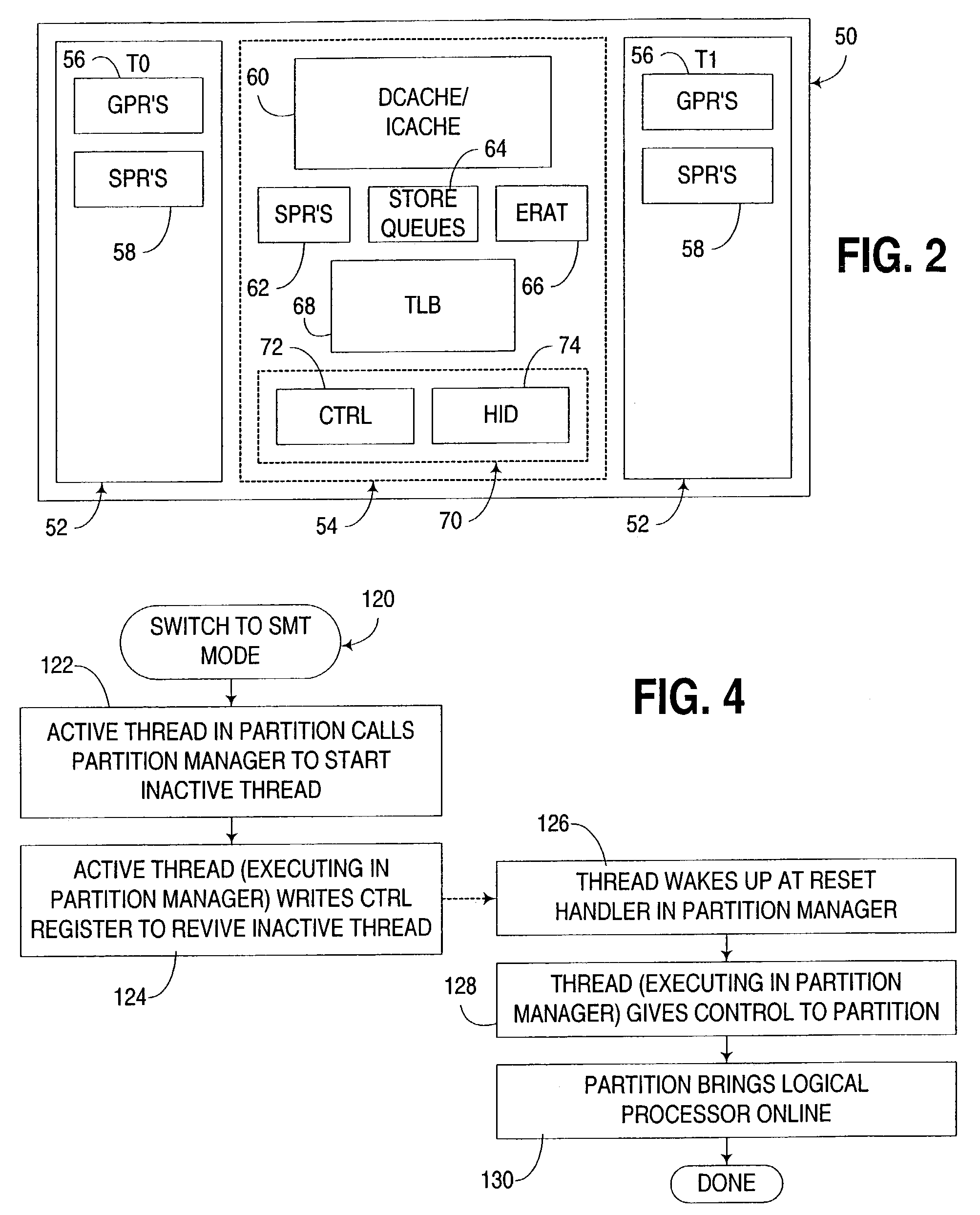Dynamic switching of multithreaded processor between single threaded and simultaneous multithreaded modes
- Summary
- Abstract
- Description
- Claims
- Application Information
AI Technical Summary
Benefits of technology
Problems solved by technology
Method used
Image
Examples
Embodiment Construction
[0023]The embodiments discussed hereinafter support the dynamic activation and deactivation of selected hardware threads in a multithreaded processor, as well as the selective control of how inactive hardware threads may be activated once deactivated.
[0024]A multithreaded processor consistent with the invention is typically a simultaneous multithreaded processor, although other forms of multithreaded processors may be used in the alternative. Moreover, practically any number of hardware threads may be supported in a multithreaded processor consistent with the invention, and any number of such hardware threads may be selectively activated in the manner discussed herein. For example, in the illustrated embodiments, a simultaneous multithreaded (SMT) processor is disclosed as including two hardware threads, with one such thread being capable of being selectively deactivated to switch the processor between SMT and single-threaded (ST) modes.
[0025]The selective control of how an inactive...
PUM
 Login to View More
Login to View More Abstract
Description
Claims
Application Information
 Login to View More
Login to View More - R&D
- Intellectual Property
- Life Sciences
- Materials
- Tech Scout
- Unparalleled Data Quality
- Higher Quality Content
- 60% Fewer Hallucinations
Browse by: Latest US Patents, China's latest patents, Technical Efficacy Thesaurus, Application Domain, Technology Topic, Popular Technical Reports.
© 2025 PatSnap. All rights reserved.Legal|Privacy policy|Modern Slavery Act Transparency Statement|Sitemap|About US| Contact US: help@patsnap.com



